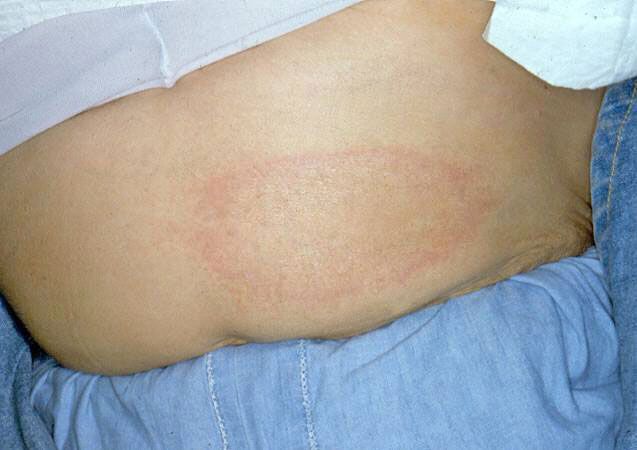- Clinical Technology
- Adult Immunization
- Hepatology
- Pediatric Immunization
- Screening
- Psychiatry
- Allergy
- Women's Health
- Cardiology
- Pediatrics
- Dermatology
- Endocrinology
- Pain Management
- Gastroenterology
- Infectious Disease
- Obesity Medicine
- Rheumatology
- Nephrology
- Neurology
- Pulmonology
The Lilac Ring of Early Morphea
This solitary, fairly well-defined whitish plaque, surrounded by a broad band of violaceous erythema is a classic presentation of the “lilac ring” phase of early morphea. Potent corticosteroids led to prompt resolution.

A 46-year-old woman presented with the new onset of a slightly stinging and burning, expanding patch on the upper abdominal skin. The patient was otherwise entirely healthy and ingesting no medications.
Key point: The lesion consists of a solitary, fairly well-defined whitish plaque, surrounded by a broad band of violaceous erythema. The area was not tender to the touch, but did feel firm to palpation. This is a classic presentation for the “lilac ring” phase of early morphea.
Treatment: Application of potent topical corticosteroids led to the prompt resolution of inflammation and to cessation of lesional expansion. Ultimately, the patient was left with a somewhat hard, slightly hypopigmented patch with a faint brown border, representing “burned out” (or inactive) morphea.
Note: This is a manifestation of localized scleroderma and is typically not associated with systemic signs or symptoms.
